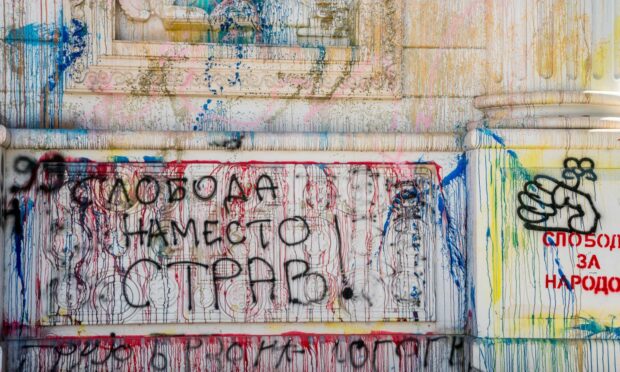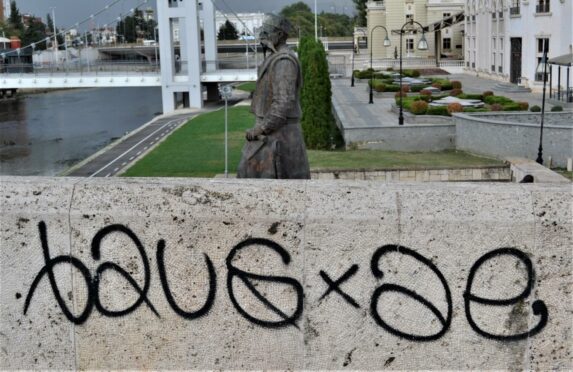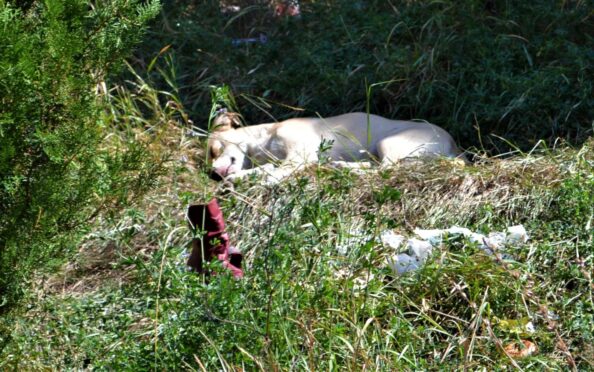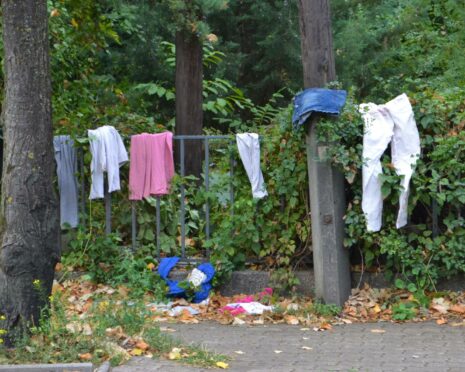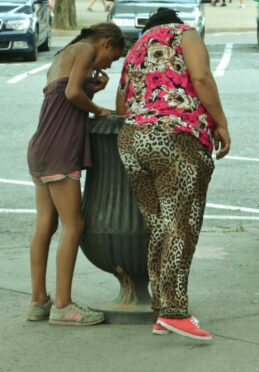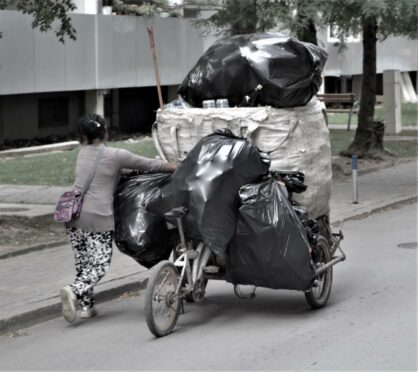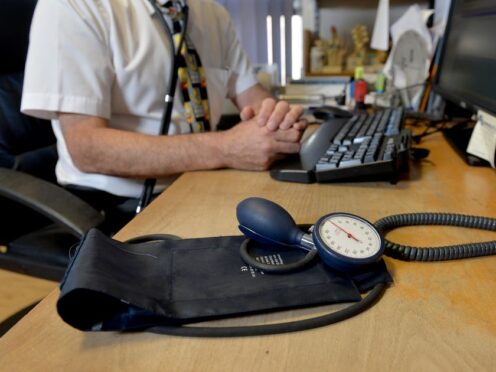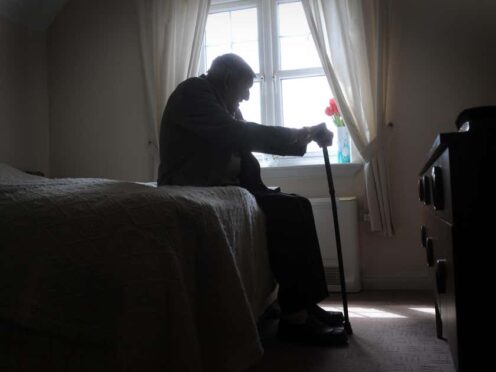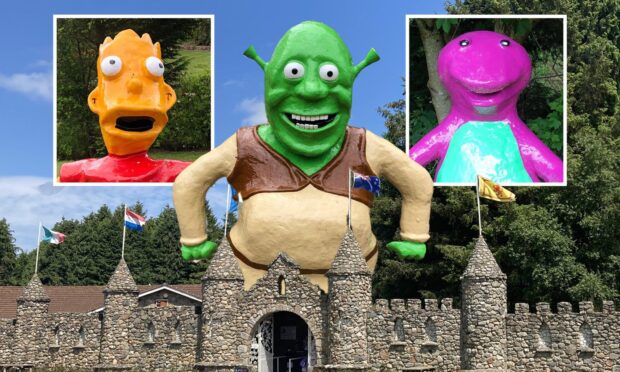If you’ve read my columns over the past two weeks, you may have wondered with all the praise I heaped on it, if I were now working for the Macedonian tourist board.
Not so, of course. And always aiming to get under the skin of wherever I am, here’s a column on the other side of Skopje. The not so nice one, but nonetheless, a real one.
Macedonia is not known as one of the poorest countries in Europe without reason.
Graffiti is everywhere. Just out of shot of some of the stunning photos with previous columns, graffiti blights an otherwise spectacular scene.
There are plenty of police walking around, but they seem to be uninterested in everything. High time they sorted this out, it’s ruining the city.
I could mention corruption. Macedonia is rife with it. However, as a visitor simply here to see the sights, you’ll likely never come across it. Therefore, I’ll focus on two things you will experience.
Stray dogs
Stray dogs are, of course, not a problem for only Macedonia. But the situation is pretty bad down here and getting worse. It’s claimed that 2020 saw the largest number of stray dogs in Macedonia.
While many are tagged behind the ear by the government, this meaning that they are vaccinated, the general feel among charities is that nowhere near enough is being done.
It must be said, animal welfare at an official state level is sadly near non-existent. It’s left to local volunteers, who do their best and try to rescue, treat and help abandoned strays. In fact, there was outrage when in 2017, dogs were being poisoned on mass in Skopje. Inhumane and not the answer.
You see them along main roads, sleeping in parks, and around communal bins. I was very wary of these places when walking. I always felt safer when another person, in particular a local male, was walking close by. Potential back-up if attacked.
Some of them are rather cute. They usually lie around, bothering no one. However, they can and do attack for apparently no reason. Tragically, some people even die from dog attacks here.
A few years back, a 17-year-old girl drowned in a river whil trying to escape a pack of angry dogs, and a four-year-old boy was mauled to death. I’ve read that in 2018, they reported one thousand bite incidents in Skopje alone.
The problem is not helped by irresponsible owners who often dump unwanted dogs on the street. Of course, they then breed like crazy and the problem grows tenfold.
Authorities need to do more, much more. Education programmes about how to care for animals, and neutering programmes, but really for human safety they should be removed from the streets; not killed of course, but removed. Sounds simple? Yes, very doable, however, we must remember that Macedonia is a poor country, so this problem, as serious as it is, is way down the list of priorities.
If you decide to visit stunning Skopje, please don’t let the dog issue put you off, but just be aware of it. Stay away from communal bins, don’t venture out at night near city parks, and if you can avoid it, don’t walk alone.
Unfortunately, I didn’t have that option.
So, what if you ever get confronted, anywhere actually, by an angry street dog? There are some absolute golden rules to follow.
Coming soon, an article based on advice from professionals and my own experiences, on what to do/how to fend off a dog attack.
The plight of the Roma
The Roma, or Romani, people originally migrated to Europe from India; around 1,000 years ago. But their story is far from romantic. During the Second World War, while the Jewish story is well told, the Roma one is not. The Nazis sent half a million Roma to the concentration camps. We never hear about this, do we?
Today, it’s generally accepted that life is better for the Roma, the further west they go. So, what’s life like for the average Romani person in eastern Europe?
They will often experience daily discrimination from the police, segregation in healthcare and schools, little chance of a good job, poverty, especially in rural areas, and even a lack of water.
It’s a fact that in the recent past, Romani women who went for, say, an emergency birth or C-section, were then forced to sign a piece of paper allowing the state to sterilise them – to keep their numbers down. There are hospital records to prove this.
Even today, many Romani women don’t trust state healthcare, so they don’t go to the doctor.
I’ve written about the plight of the Roma in Hungary and Slovakia in particular. So it fascinated me to learn that on the outskirts of Skopje, there is a municipality called Suto Orizari.
Officially there are 17,000 residents, but unofficially around 40,000 and the vast majority of the population are Romani. This area has its own mayor, own language, even own TV programmes. According to the mayor: “This is the only place in the world where Roma are organised politically and economically and fill their lives for themselves and one another.”
I did much research on Suto Orizari, even asked Skopje locals if it was safe to visit. I was told it was. However, in the end, I chose not to go.
Why? Sadly, I’ve seen it all before. Especially in Slovakia’s infamous Lunik 9 slums. I didn’t need to see this again, and I also came to the conclusion late one night that these folks didn’t need me pointing a camera in their faces in what is their home.
The biggest problem the Roma have here is unemployment. They estimate that 77% in this municipality is out of work. Therefore, you’ll find a lot of them in Skopje city centre. But not begging.
I observed Romani families every day in central Skopje. I discreetly followed a young girl and her mum as they walked. They didn’t beg, but went from bin to bin, looking for whatever they could find.
Some beg, but it’s mostly older men. The woman, work. By collecting rubbish. There is precious little recycling here by the state, but there is money to be made, and that’s where individual step in.
I saw many Roma do this. Not a pleasant job, as they have to search through huge communal bins outside blocks of flats which hold food waste, etc. Plastic bottles, tin cans, pieces of metal, are piled high on to carts and taken off to be sold.
Look at the woman in my photo. She is on a mission and already has a full load at 10.30am. Another, I saw, looked seriously bedraggled. I’d guess she was only late twenties, with at least six kids in tow, all under, say, 13. She pushed her trolley up and down the streets as her kids raked the bins for stuff.
Her youngest, aged around four, sat in the actual cart in among the rubbish. He had no socks, shoes or trousers on. He didn’t even have pants on, totally naked from the waist down, just a dirty old tee shirt on his top half.
It can be upsetting to view this, children raking through bins, but the Roma are no threat, they are not interested in you or stealing from you. Certainly, do not let this harrowing human issue stop you from coming to Skopje. The Roma want the same as we do, to have as good a life as is possible.
End of my journey
My Balkan trip had come to an end. I’d enjoyed the challenge of getting back out there.
The questions I set myself before heading off were: “Can I still do this?”
Answer: “Yes.”
“Do I still want to do this?”
I’ll reveal that answer, in due course…
After time out writing up all these columns that you’ve been reading, I was Canada bound, and because of Covid, this was my first opportunity to do so since 2019. Lots of columns coming up regarding the plight of Canada’s indigenous peoples.
But before I left the Balkans, I decided on a column that I actually thought about writing two years ago. Reason for not doing so as yet? I thought it may be a bit too controversial.
However, after seeing so many monuments and gushing praise for her, I decided this was the perfect time to do so. A column on a woman who is revered the world over.
